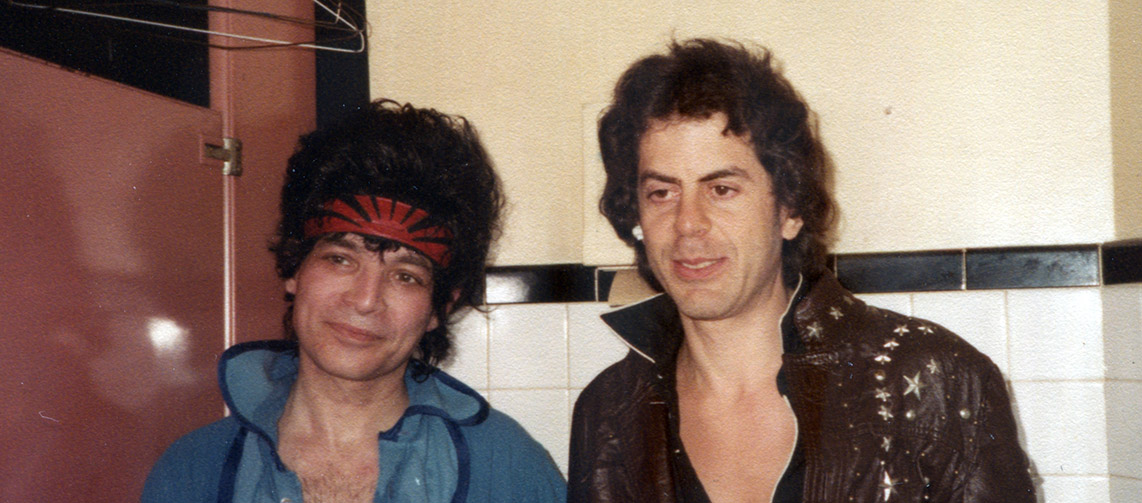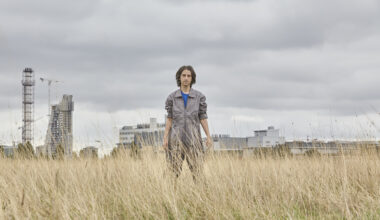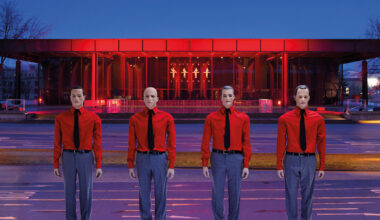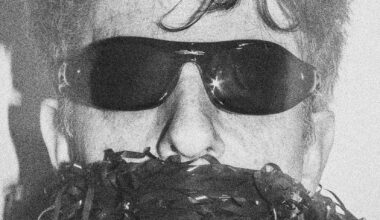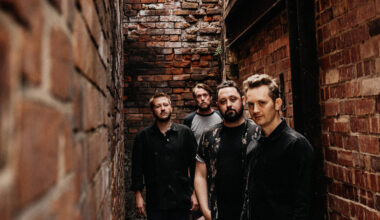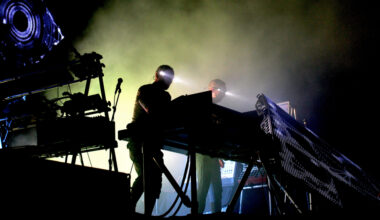Myth and legend are never more than a step away from Suicide. In a new book by our very own Kris Needs, ‘Dream Baby Dream — Suicide, A New York Story’, Alan Vega and Martin Rev reveal the inside line on their extraordinary career. With this exclusive extract, we’re treated to the gobsmacking first-hand recollections of the recording sessions that lead to their startling 1977 eponymous debut album
By 1977, Suicide had been walking their own super-voltage high wire for most of the decade. Marty Rev’s rudimentary old Seeburg Rhythm Prince drum machine had been joined by the Farfisa organ he had borrowed then bought from a friend the previous year. In the early months of 1977, “time and disco and all these other influences I was trying” were about to collide as he and Alan Vega prepared to record Suicide’s first album.
Manager and co-producer Marty Thau had booked time at Ultima Studios, upstate in the small town of Blauvelt; “in the middle of nowheresville”, as Alan describes it. Nevertheless, Suicide were thrilled when they walked into Ultima on that first day. “It used to be a bowling alley, so it was long, narrow and very wooden,” recalls co-producer Craig Leon. “It didn’t really look like your typical studio, but it was a great place.”
Suicide, Thau and Leon assembled at the studio, along with hapless in-house engineer Larry Alexander. They started by setting up Rev’s Farfisa, Rhythm Prince, distortion boxes and hooked in a transistor radio. Max’s [Kansas City] manager Peter Crowley still marvels at Suicide’s set-up at that time. “They didn’t have any money, so Marty had a primitive drum machine and old Farfisa keyboard, which had broken keys and a bunch of Electro-Harmonix guitar distortion devices that he plugged in series between the keyboard and amplifier in order to get this really raunchy sound. My belief is that they never sounded better than when they had that broken-down stuff.”
“Marty Rev had this whole Rube Goldberg [US Heath Robinson] bunch of stuff he’d put together, with the drum machine and all these other things,” says Craig. “There were no sophisticated synths or anything, it was just whatever he found!”
The unique combination of cheap, patched-up components which made up Rev’s ‘Instrument’ (as it’s credited on the album cover) played a major part in the album’s alien, radioactive sound.
“We just set up and played our set,” says Rev. “We had been playing everything on the album live for so long, the songs had all developed themselves. After running through the set a few times, we cut the album live in the time it took to record, like 30 minutes or so.”
“We ran through their set several times, because the way that it was recorded was the way they were set up,” recalls Craig. “It was all basically coming out of a couple of outputs. There’d be a straight signal, then an amp signal, and it went through like radio electronics and things. Basically, I put out a big mono signal, and you got what Marty was playing and that was it. Then there was Alan. When I told him he was going to get these extreme loopy Elvis things, and these kind of repeat delays from Jamaican records, he was very much into it.”
Craig had thought carefully about the best way to present Suicide’s senses-blasting live act. “I knew what they’d done live, and how unique they were, so this record really had to do them justice. It couldn’t just be a blank version of what they did live, so let’s go to the other extreme in the effects, and what we do with the sound. I thought the right thing to do would be to use a lot of effects from all the different kinds of music that was influencing them, and things I really liked, and make up the sound with outboard equipment. If you listen to the multi-track, when it was recorded, it would have Marty Rev on a couple of tracks, Alan on another track, and everything else as printed effects which were controlled and went down live as they were playing it; all these reverbs and delays, feedback feeding back on itself, all this Lee Perry kind of stuff.”
Craig thought back a couple of years to when he was recording blues-rock singer Martha Velez in Jamaica with Bob Marley and crackpot producer Lee Perry. While playing on similarities he had noticed between Suicide and Can’s ‘Monster Movie’ three years earlier, Craig tried out the dub secrets he had picked up, using the studio’s tape-delay slapback and Eventide digital delay unit, adding effects live rather than later at the mixing stage. The studio’s “incredible, home-made. Kind of microphonic desk” helped. “When they were running through stuff, it wasn’t so much to get takes for themselves, but of all these different effects. Marty Thau, Larry and me were running around working knobs going to different echoes and delays. Everything you hear on the record was printed live as it was going down. None of those effects are after-effects. It’s like a dub mix.”
Craig says Rev’s original source sound and “everything he was doing” was “what he was putting out through the guitar amp, which was miked as the original source sound. I said, ‘Let’s take off all your effects, and record everything straight and clean, without the boxes, right into the board’. If you went back to the very original tape somehow you would get a very dry version of what they did live without all those effects. They had their live set pretty much down. I did not, like I did on a lot of other records, say ‘How about doing this here?’. It was strictly interpretative.”
“Craig said take off all my effects and play it straight. I agreed to try it and see how it sounded,” notes Marty. “At the time, I was playing a Farfisa organ and it was a much thicker sound anyway. I was using a little AM-FM radio, which I could turn on and play as an instrument, and used to use live sometimes. Everything else was going directly into the board, which we had never done before.”
The radio was a crucial part of the nightmare inferno Marty Rev cooked up for ‘Frankie Teardrop’, “the album’s masterful centrepiece”, in the words of Marty Thau. Still the most shattering 10 minutes ever committed to vinyl, Suicide’s ultimate tour de force was the only track to go through any kind of time-consuming evolutionary process in the studio, after its inception as a demo the previous year. It was still called ‘Frankie Teardrop Detective’ that day Suicide blazed through the songs which the album would be drawn from but, later on in the sessions, something would happen which transformed the track into their most notorious statement.
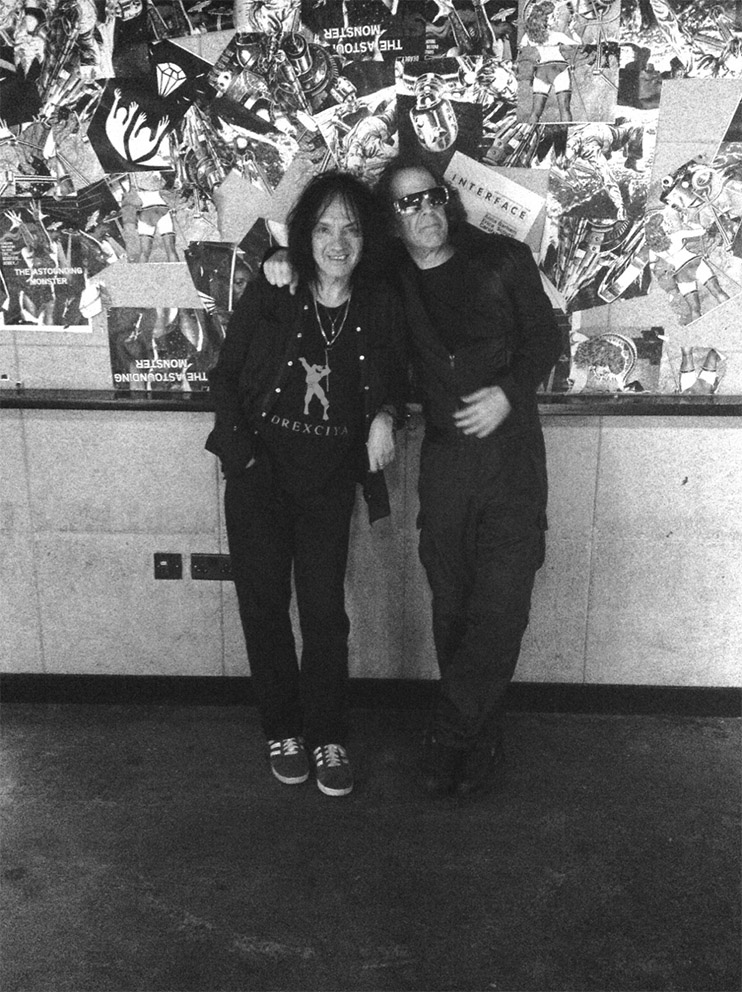
The sessions proved hard going for engineer Larry Alexander, whose experience of recording electronic music had only run to his own synth-created album of Tchaikovsky’s ‘1812’ and ‘Nutcracker Suite’. “Larry didn’t know what to make of any of it,” says Craig. “It was mostly Marty Thau and me. I think he thought I was insane wanting to feed all these things back into each other. He didn’t understand what was going on. He was a little too conventional.”
Rev recalls, “I did very little overdubbing, maybe just a spot here and there. So the record was like 1-2-3 — done. Then it was all mixing. Craig seemed very happy with it. We all rode back to New York in Marty’s car, and he was very positive. We were too where he was concerned, which he countered with ‘The producer can only be as good as the band he’s producing’.”
Then Craig had to go to LA, “so I made what I thought would be a preliminary two-track mix of what we had, which was basically the sound of everything kind of put up the way that we did it; the music, voice and effects. All you could do with what was recorded was move those effects up or down. You couldn’t make new ones or anything. I think the band kind of approved of whatever was recorded by the time that I left. I don’t know what happened during that time when Marty Thau decided he was going to become Lee Perry!”
There are several accounts of what happened next and what mixes ended up on the album. What is known is that, while Craig Leon was away, Thau came out to play. Although he had never produced an album before, he decided to do a mix at Ultima with Larry Alexander, with Suicide on hand for approval and a large bag of weed for inspiration. In his memoir, Thau wrote “Taking into account all the obstacles Craig had to contend with, like the technical limitations of the recording studio, a very small budget and Suicide’s recording inexperience, he did an unbelievably great job. However, after carefully scrutinising his discerning and highly substantive interpretation of Suicide’s music, I felt his mixes were too subtle for a group calling itself Suicide. I wanted to be touched, thrilled and intimidated in equal measure by Suicide’s over-the-top psychodrama, and needed to experience their poetic sophistication, as confrontational I suspected it might sound to establishment cynics.”
“So Marty said, ‘Hey, why don’t I produce it?’,” says Rev. “Marty had never produced before. We had a great time because we would drive up to the studio every day. For us, it was like going to the country because we hadn’t been out of the city for so long! Craig was an experienced, polished producer at that time, but Marty gave some of the things a heavier, rougher, maybe more street angle; not that there was that much difference to the two. There couldn’t be, because it was all exactly the way we played. Marty was more of a punk, so we could be more involved. He would sit at the board, and Alan and I would relax on the floor of the control room. Marty would just sit and go through every track, one at a time, EQ-ing. By that time, we were so incredibly stoned. Then after he got through all of them, he’d put ’em all together. Every time he’d finish a track, he’d turn to us and say, ‘What do you think?’. We’d say, ‘OK, it sounds good’, because we were all very high on the whole experience, and whatever else was going through our blood streams. We were all in a kind of positive state of ecstasy.”
As the trio further explored these novel mixing techniques, the atmosphere in the studio became extremely hands-on, enhanced by Thau’s freely-circulating marijuana stash. As Rev recalls, “Marty was trying to explore all the equipment in the studio, like the big phaser that we used after the album was cut, on the remix of ‘Cheree’. It was the state of the art one, at the time. He only had two hands to do all this stuff so we’d be dividing it up. Not being a producer, Marty would push things, not knowing how far he could go. We were getting more and more stoned. He didn’t know any of the methods. None of us did. The only one who knew anything was Larry Alexander, but he was resisting and getting his nerves frizzled.”
“It was driving us crazy,” says Alan. “One day it was so hard in the studio, man, I was seeing treble. I went to open the door to go outside to the car and saw three door knobs! It was so intense. The shit that was going on between the two of them and then asking us what we thought. But Larry Alexander is the guy who went insane. He said, ‘I gotta get out of here!’. He went crazy with this record.”
The sessions got crazier still when Alan decided to redo his vocals on ‘Frankie Teardrop’ with new lyrics after reading a newspaper story about a factory worker who lost his job and, in desperation, killed his wife, kids, then himself. “I changed the lyrics,” he recalls. “Before, it was about a detective at the race track, because I went to the race track a lot in those days, but then I saw this story in the paper about this factory worker who died, so it became a whole new thing, and a lot more relevant.”
In two improvised takes, Alan placed himself in the heads of both killer and victims, ending up tormented in hell, while Rev whipped up a disembodied electrical storm, which was given another sinister dimension through his radio. The track now almost become like Alan’s psychopathic answer to Patti Smith’s ‘Piss Factory’ as his new lyrics were also inspired by his years working shit factory jobs in Brooklyn. “Lots of ’em, just trying to survive. That’s what ‘Frankie’ is about. It’s a self-portrait, of everybody. ‘We’re all Frankies, all lying in hell’. I really got into it, because the music had so much of an effect. I almost blacked out with those screams I did. Marty put on some static from the radio, which really made it. That blood-curdling scream still gets me when I listen to it. I hadn’t listened to it for a long time and when I did it really scared the crap out of me. That’s one of my longest screams there. Putting myself in the guy’s mind was genuinely disturbing. I always think it’s the song Lou Reed wishes he would have done.”
Rev recalls that, when it came time to mix the new version of ‘Frankie’, it took Marty, Alan, Larry and himself to harness the monster they had created as it appeared on the album.
Get the print magazine bundled with limited edition, exclusive vinyl releases

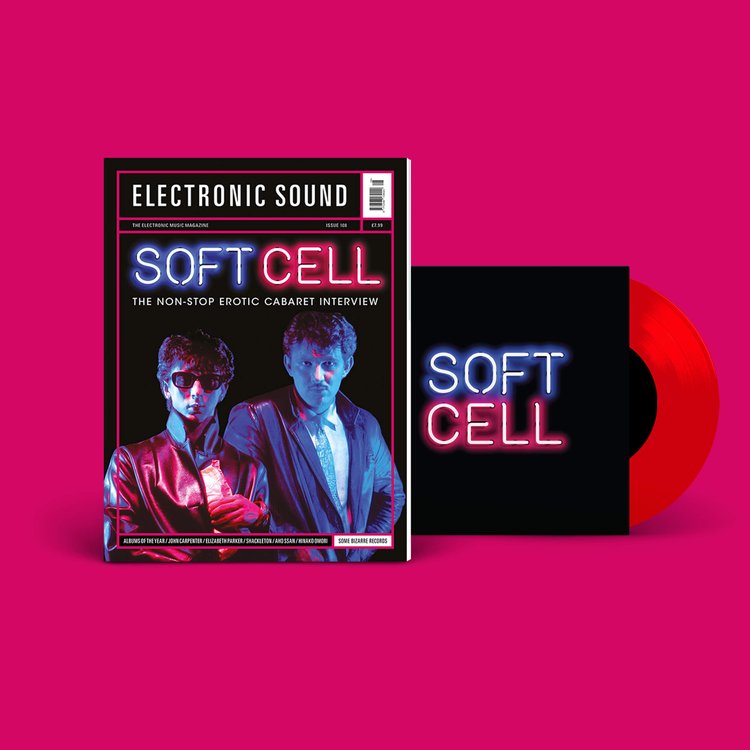
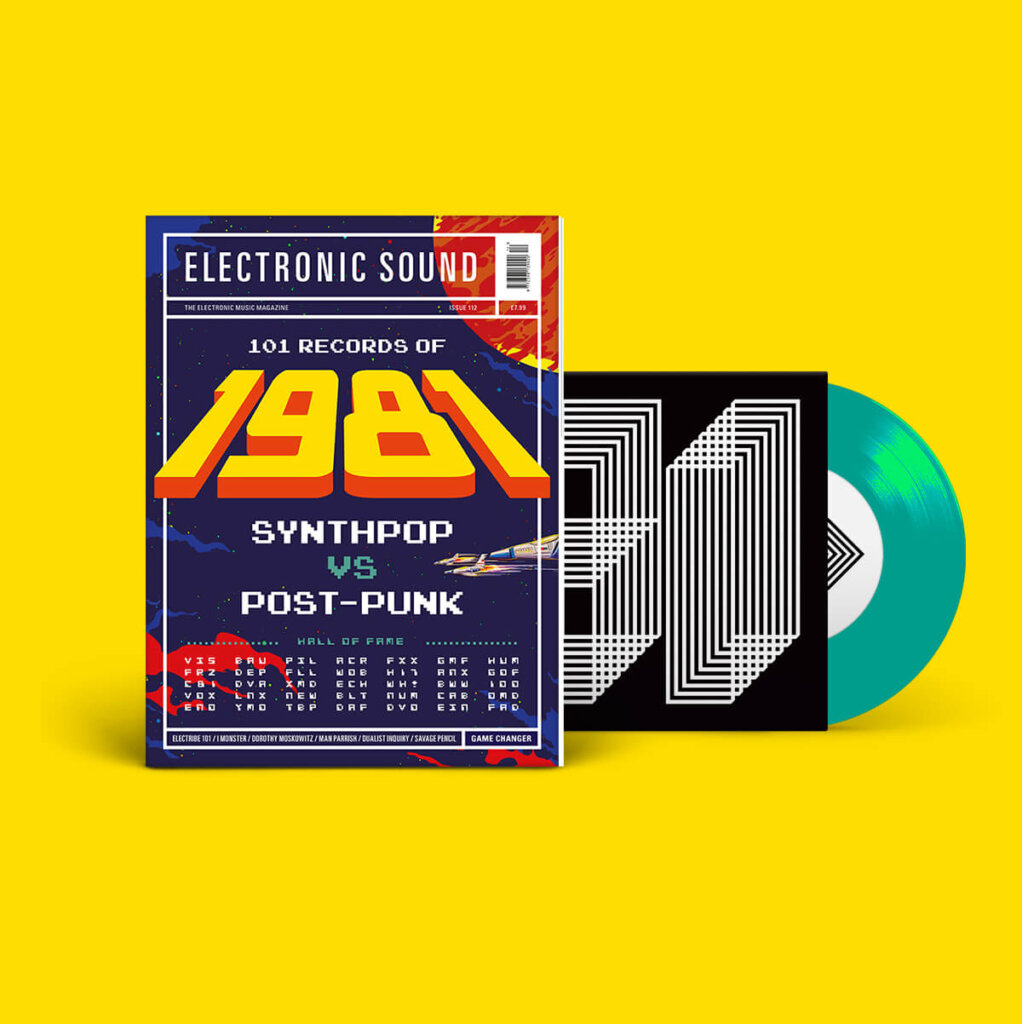
When Craig returned, he was shocked to find a rather different album to the one he had recorded, remembering, “Marty had really overdone it, smoking a couple of joints and really gone nuts on the effects. That’s all that you could do — either raise Suicide or raise the effects. If you went through every effect individually, you’d have to have been on some other planet. He had destroyed the sound by fooling around with it. You didn’t hear the original source. I was thinking, ‘God, my name’s gonna be on this! What is this that he’s done here?’. But there was a conscious effort to do that and the guys had to agree with it. They kind of wanted to do it, they just didn’t know how to do it.”
When it was time to master the album, Thau and Leon met at the venerable Frankford/Wayne studio. “Marty still wasn’t sure which mixes should be used,” notes Craig. “He brought both sets to the mastering, which I was in New York to do with him. We went through the stuff that he had done, because there was a dispute. I don’t think any of his stuff actually ended up on the album. If anything made it, it was ‘Cheree’. The mastering engineer was going, ‘You can’t put this out, quality control wouldn’t press it!’. I persuaded him that we should go pretty much with what the band said.”
“Actually, I remember it a bit differently,” says Rev. “I know that we used ours and Marty’s mix of ‘Frankie Teardrop’, ‘Ghost Rider’ and ‘Girl’ and probably, as Craig said, ‘Cheree’. They were very close. With due deference to Craig, I don’t remember us not liking any of his stuff.”
Suicide’s first album was finally ready; created for a minuscule $4,000 in an atmosphere of cathartic intensity, stoned experimentation and often under the kind of DIY circumstances which might have floored other bands. Over 38 years since they were recorded, its seven songs feel branded into my soul like eternal footprints, waiting to combust into glorious life when summoned. They now sound as alien and weirdly arcane as a Robert Johnson blues recording.
The journey will always start with those two supernatural cruise missiles, ‘Ghost Rider’ and ‘Rocket USA’, Alan’s speedway anger juddering through Marty’s spectral R&B motifs. ‘Cheree’ still swells like the purest declaration of lovestruck awe as New York’s heart pounds below and its lights twinkle above. Then it’s Rev playing with an Elvis riff he heard as a child on ‘Johnny’ and the finger-clicking bedroom sashay and nonchalant passion of ‘Girl’. ‘Frankie Teardrop’ will always invoke that unbearable tension and swelling terror leading to opening the gate into its teeming Bosch-like maelstrom, before the album closes with the desolate descent of ‘Che’, which sees Alan mourning like an ectoplasmic spirit in a place no one had ever seen, over Marty’s colossal tomb slabs and Bach-like organ flourishes.
‘Suicide’ was a once-in-a-lifetime alchemical combustion of disparate personalities on a mutual mission. It was Alan and Marty’s story so far, but cursed to be a monolith for the future to appreciate when the present could not. Even in 2015 — particularly in 2015 — no other album comes close.
‘Dream Baby Dream — Suicide, A New York Story’ by Kris Needs is published by Omnibus Press
